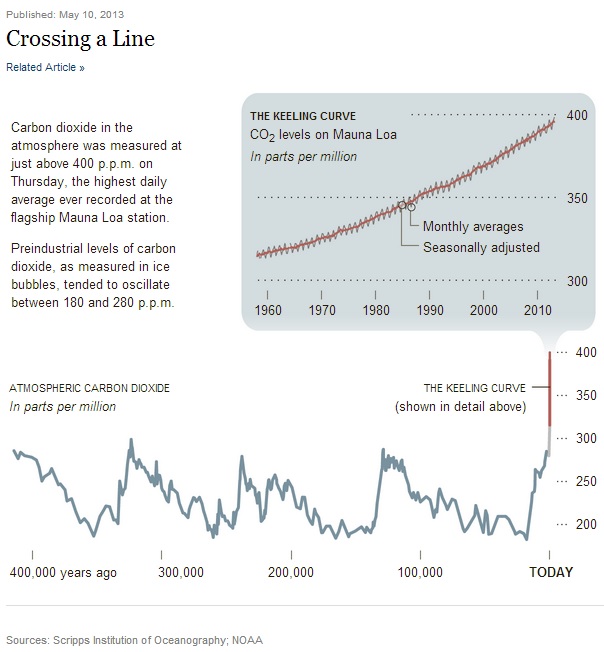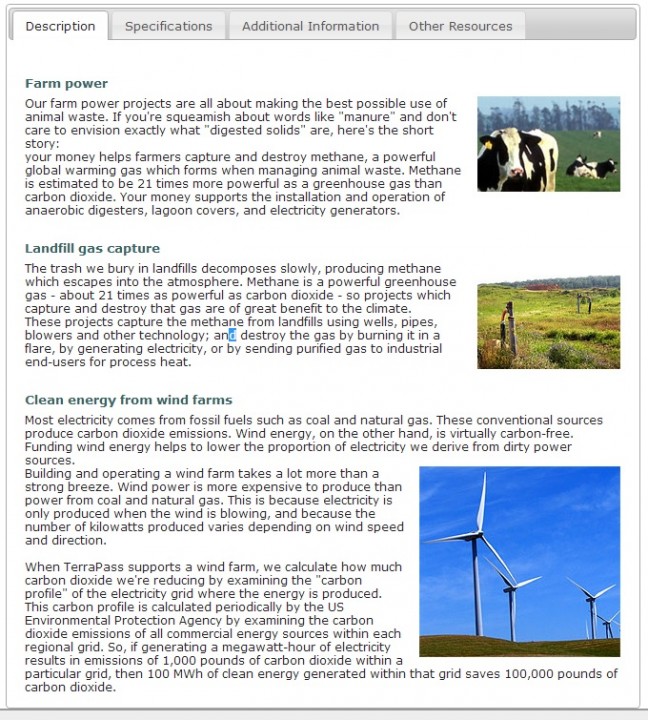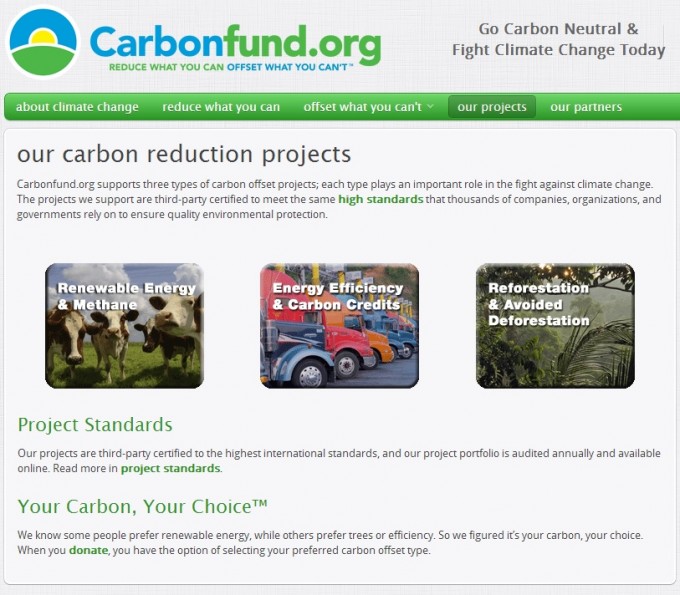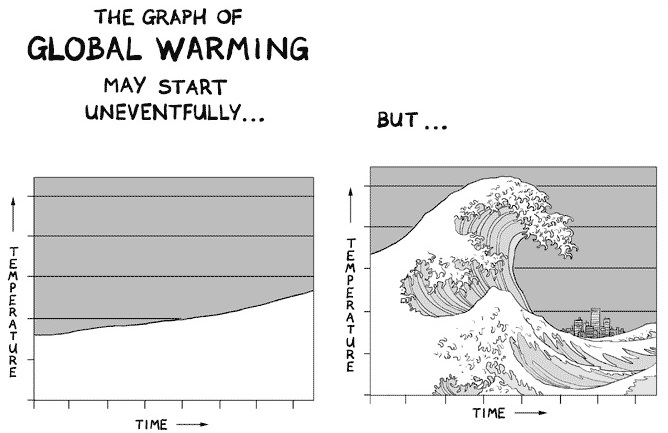Let me start by saying that I am definitely not an expert in this matter. I do, however, work for a conservation organization and am therefore predisposed to have a greater-than-most’s concern for our environmental future. But a recent article in the NY Times should be a wake-up call to anyone who shares the love of travel, culture, wildlife, or even just their own personal status quo.
The National Oceanic and Atmospheric Administration revealed data announcing that the atmosphere has hit a crucial carbon dioxide threshold not reached in three million years, and the global trend is steadily increasing. Carbon is a very good conductor of heat, causing long-term climate shifts, a rise in global temperature and sea levels, and potential economic stress (in the form of hurricanes, floods, and other natural disasters) to an already suffering GDP.

This is all horrible and scary, and some groups claim that all these projections are bunk anyway- just another tactic for the left wing liberals like myself to villainize “big oil”. But there are easy choices to travel green that we all can make before driving to the airport, flying off to a far away land, and luxuriating in your daily-laundered towels and bed sheets.
My biggest guilty travel confession is the massive amount of airplane travel emissions I am responsible for. I know that being a conscientious global citizen is critical for environmental sustainability…… and still, we don’t offset our emissions. Why? To the initiated, assigning monetary reimbursements for travel seems arbitrary, impersonal, and too theoretical for me to fully have emotional buy-in. I know what I’m doing is bad, but I don’t know what the money for offsetting those emissions is specifically being used for.
A quick look at United and American, our two most frequently flown airlines, shows that both have programs in place to amp-up their environmental responsibility. Both Airlines point out that air travel only accounts for 2% of global CO2 emissions, and have global citizenship programs in place. United’s Eco Skies Program and American’s Environmental Stewardship Initiative both have projections for cleaner fuel, more efficient engines, and better waste management systems. This is progress, but it is still up to the traveler to offset the emissions of each trip independently. According to the US Energy Information Administration, each gallon of jet fuel emits 9.57 kilograms of CO2, or 11,823 lbs CO2 PER PERSON for our most recent trip alone. Additionally, the EIA estimates that U.S. gasoline and diesel fuel consumption for transportation in 2012 resulted in a total of 1,511 million metric tons of CO2 – 29% of total U.S. energy-related CO2 emissions. We don’t have a car, but usually get a cab to the airport, making us contributors to this number.
What does this mean to me? With Terrapass, the $71.40 calculated from distance traveled on my trip can fund an offset projects of my choosing, such as capturing greenhouse gases from landfills, destroying methane-emitting farm waste, or funding clean energy.

Carbonfund.org says that a mere $37.90 will put me in the clear for the same trip, allowing me to fund one of three categories: renewable energy and methane, energy efficiency and carbon credits, or reforestation and avoided deforestation.

Both offer in-depth descriptions of the projects you can fund, but why the difference in price? Terrapass is for profit, while Carbonfund is a non-profit, dedicating over 90% of their revenue straight to the projects they support. This also means that Terrapass is non-deductible, and Carbonfund is tax-deductible, making the decision of which to travel green with much easier.
While I personally feel more confident making these decisions then I did before doing this research, I feel that many people do not see the need for this investment of time or money. The problem is too abstract, the future too daunting…. so Instead, why not go buy a few nice bottles of wine with that $71.40 and enjoy the now?

I think that people need to have an incentive to make immediate change. Many Carbon capture programs exist on a governmental and corporate level, and are working to various degrees across the world. Take a look at Forest Trends’ Ecosystem Marketplace for a rundown of such programs as of 2012. if a program like SaveUp existed for travel, consumers would be more inclined to actively participate in making change in their everyday lives. What if the motivation for learning small environmental lessons through interactive games was hotel rewards for green hotel chains? The Green Hotels Association and Eco Friendly Hotels Worldwide are two sites that have compiled some good options once you land, and Responsible Travel Report has more general tips to green your travel practices. Doing all this research can be intimidating- it’s about time this issue become a prevalent, integral part of travel. Make just one of thee changes, and you’ve already begun to travel green.

Leave a Reply